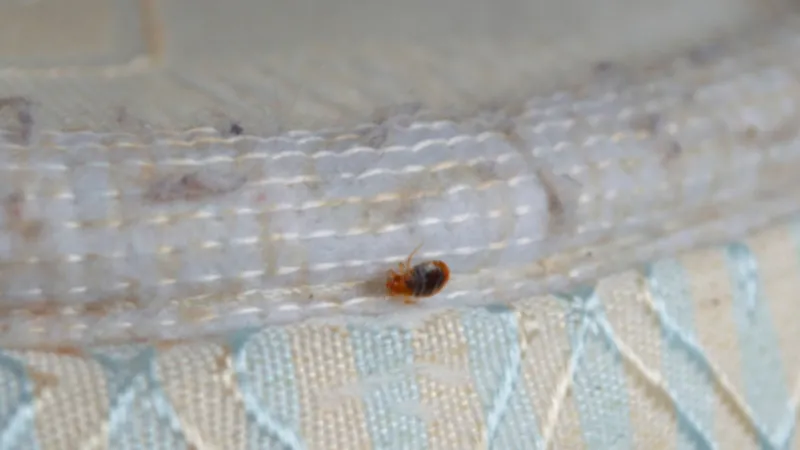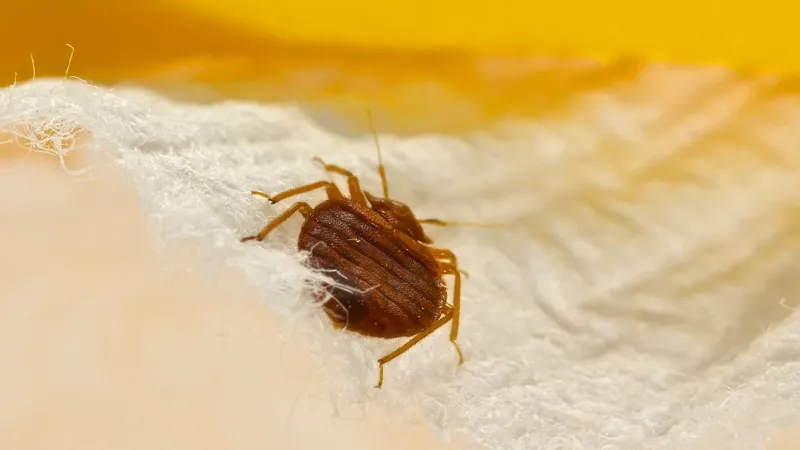In this article, we’ll go over the seven early indications of bed bugs, where they hide, and how to conduct a quick visual inspection of your home.
How to know if you have bed bugs? Odors, bites, blood stains, fecal marks, bed bug eggs, shell casings, live bed bugs are the seven early signs of bed bugs.
Continue reading to find out more.
What Are Bed Bugs?
Cimex-genus insects known as bed bugs eat human blood at night. Their bites can cause a range of harmful health effects, including skin rashes, stress, and allergy symptoms.
Bed bug bites can cause anything from subtle redness to obvious blisters on the skin. They are small, brownish, and oval in shape, and adults are about the size of an apple seed. However, after ingesting human blood, their bodies tend to smell and turn reddish in color.
How to Know If You Have Bed Bugs? Early Signs of Bed Bugs
If you suspect that bed bugs have invaded your home, it’s well worth your time to understand and familiarize yourself with these early warning signs:
Odors
- An unusual, musty odor with no apparent cause
- Bed bug pheromones are often compared to the scent of raspberries, coriander, cilantro, or almonds
- A severe bed bug infestation may smell like rust, wet towels, and moldy laundry
Sometimes, the first hint that something is amiss comes from our sense of smell. If you notice an unusual, musty odor in your bedroom that doesn’t seem to originate from an obvious source (like a pile of dirty laundry) it might be an early sign of bed bugs.
Bed bugs emit “alarm” pheromones in response to being bothered or threatened. These pheromones emit specific odors that could have a faintly sweet or musty scent. The smell is compared to raspberries, coriander, cilantro, or almonds by those who have personally experienced it.
Pheromones typically have a very faint scent that is practically undetectable to the human nose. Unless you’re a trained bed bug-sniffing canine, your chances of noticing the raspberry-like pheromone smell from bed bugs are very low.
When there are numerous bed bugs present, the smell of their pheromones, dead bed bugs, shed shell casings, and bed bug excrement are all combined. As the infestation worsens, the resultant odor is disagreeable and rusty.
Odor is usually the least reliable of the early indications of bed bugs. That’s just because people can’t smell bed bugs when there are only a few of them around. Additionally, if you smell something, you might mistake it for something else because most people aren’t familiar with the smell of bed bugs.
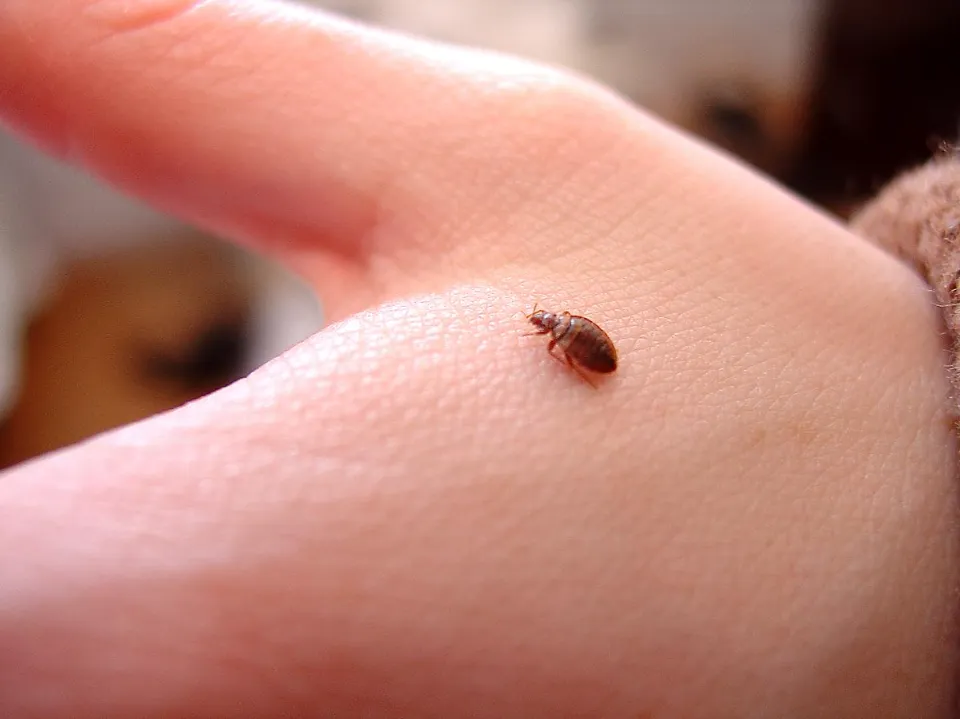
Bites
- Small, red, itchy bumps
- Most common places for bites include arms, hands, and legs
- Sometimes appears as clusters of 3 or 4 bites in a line (“breakfast, lunch, and dinner” pattern)
A concerning first indication of bed bugs is waking up to red, itchy bumps.
Ectoparasites known as bed bugs ingest blood while we sleep. They frequently bite the arms, hands, and legs—areas of the body with bare skin that are exposed at night.
However, bed bug infestations cannot be identified solely by bites. There is no clear cut way to tell bed bug bites apart from other insect bites because different people can react to bed bug bites very differently. In fact, a whopping 30% of people don’t exhibit any skin reactions at all to bed bug bites.
While everyone reacts differently, the most common symptom of bed bug bites is red, itchy bumps appearing in small clusters. Some people refer to this as the “breakfast, lunch, and dinner” pattern, which describes bed bug bites as appearing in small clusters or lines of 3 bites. However, bed bug bites can also show up as a single bite or in haphazard patterns.
As a side note, bed bug bites are usually not dangerous and do not transmit any known diseases. Certain chemicals in the saliva of bed bugs, however, may cause allergic reactions in some people.
Bloodstains
- Unexplained red or rust-colored stains
- May appear as small splotches or smears on bedsheets, clothing, and pillows
- Check first for other probable causes
Even though we don’t notice bed bugs when they are feeding on us, they don’t always get away unscathed.
After a bed bug becomes engorged with blood, its original flat, seed-like appearance becomes elongated and bloated, resembling a tiny football. You run the risk of accidentally crushing a bed bug that has just finished feeding if you suddenly move or shift your body while you are asleep.
The majority of the time it doesn’t kill them, but it does cause some of the blood they just ate to leak out and leave a noticeable red or rust stain.
Check your body to see if you can locate a cut or scab that might be the source if you notice what appears to be blood on your sheets, clothing, or pillow. If there is no other explanation for the bloodstain, a misfortunate bed bug may have left it behind.
Bed bug bites can occasionally result in bloodstains as well. To stop blood from clotting while they feed, bed bugs have an anticoagulant in their saliva. The bite wounds might bleed for a little while after they’ve finished their meal.
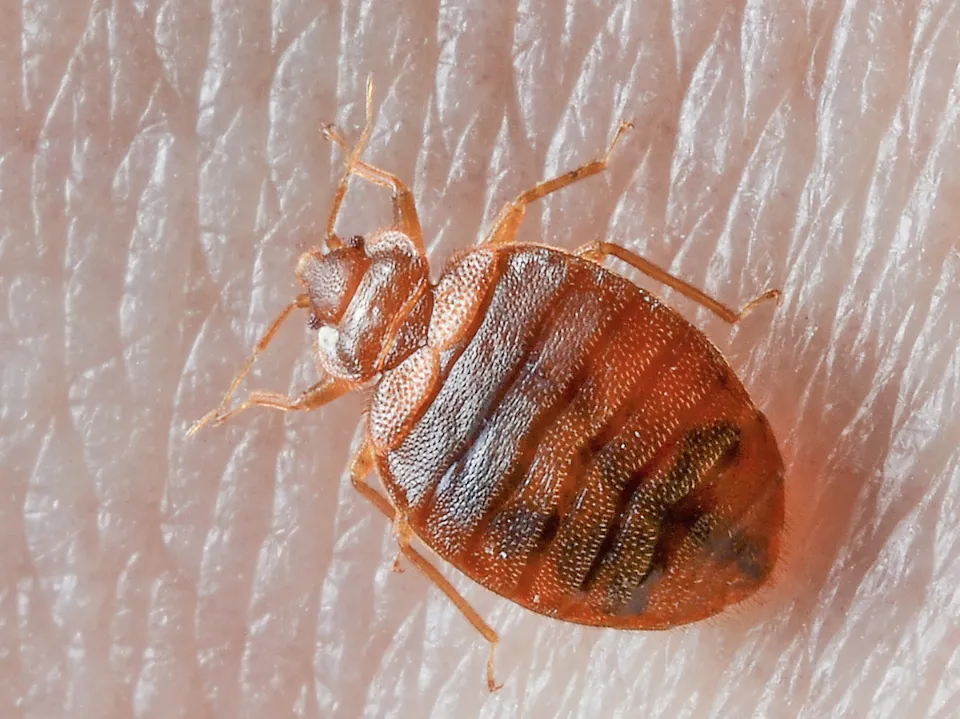
Fecal Marks
- Tiny, dark brown or black spots about the size of a pen tip
- Usually concentrated around harborage areas, but they can also be discovered on linens and clothing.
- Dark smears on fabric resembling magic marker stains after being washed
Compared to the bloodstains that we described above, bed bug fecal marks (also called “fecal spotting”) are much smaller and darker.
These small, dark spots resemble ink dots from the tip of a pen or marker. A period at the end of this sentence is about 2–4 times bigger than the typical size.
Fecal marks come from bed bug droppings, which consist of digested human blood. Because it contains iron, the digested blood is dark brown or black in color and emits a slight rusty odor that adds to the overall unpleasant smell of a bed bug infestation.
Feces from bed bugs can be found anywhere, including on blankets, pajamas, mattresses, headboards, box springs, walls, and other surfaces. Around bed bug harborages and hiding places, you can typically find them in great numbers.
Bed bug feces can be extremely challenging to remove from fabric. Water causes them to smear in a distinctive fashion, resembling magic marker stains.
Bed Bug Eggs
- Pearly white, oval-shaped
- 1 mm long; about the size of a pinhead
- Loosely stuck to various types of surfaces
- Usually found near bed bug harborage areas
Female bed bugs can lay between 1-7 eggs per day, which typically hatch within 7-10 days.
The oval-shaped, pearly white, and roughly one millimeter long bed bug eggs have these physical characteristics. They are the size of a pinhead and resemble very small grains of rice.
Even though eggs are visible to the unaided eye, they can be hard to spot unless you know what to look for. At the end of each egg is a hinged cap, which is where the newly hatched beg bug emerges from. Bed bug eggs that are more than 5 days old have a darkened eye spot; however, this can only be seen under a microscope.
They attach their eggs to surfaces with a substance resembling glue when depositing their eggs. As a result, you’ll probably find these tiny, white eggs loosely adhered to cracks in fabrics or wooden surfaces.
Eggs are frequently discovered near harborage areas, much like fecal spotting. However, pregnant female bed bugs have a tendency to wander, which could cause the infestation to spread to nearby apartments as well as other areas.
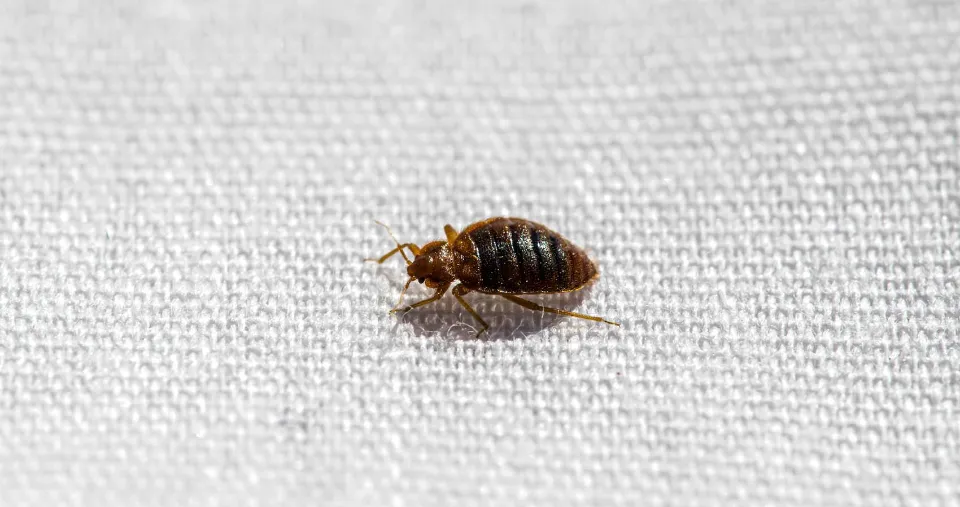
Shell Casings
- Yellowish-brown, translucent exoskeletons shed by juvenile bed bugs
- Comes in various sizes throughout the bed bug’s molting cycle
- Reliable indicators of a bed bug infestation
Bed bug shell casings, also known as shed skins or husks, are a trustworthy early indicator of an expanding infestation.
Shell casings are the translucent, hollow husks of juvenile bed bugs, and they’re often easier to find than the bed bugs themselves. They can be found anywhere that bed bugs hatch and breed—check mattress seams, upholstered furniture, and in holes, cracks, and crevices within wooden furniture.
As bed bugs go through 5 lifecycle stages before reaching adulthood, they’ll shed their exoskeleton several times.
The result of this process is what we call “shell casings” or “shed skins” in various sizes. Because most people are unfamiliar with the sizes and shapes of bed bug nymphs, this can occasionally make it challenging to identify shell casings.
However, you should think about contacting your local pest control professional for an inspection if you already suspect bed bugs and you find yellowish, translucent shells in typical bed bug hiding places.
Live Bed Bugs
- Small, flat, reddish-brown insects around the size of a flaxseed
- Often found congregating in tight cracks and crevices
- Sometimes confused with baby cockroaches, carpet beetles, spider beetles, and other small insects
Finally, the most obvious sign: finding live bed bugs in your home.
Bed bugs are reddish-brown, flat, oval-shaped insects with a large abdomen, short antennae, and six legs.
They resemble small apple seeds or flaxseeds in size. Adult bed bugs typically measure between 1/6–1/4 inch long (4–7 mm), while nymphs are can be as small as 1/16 inch long (1 mm).
In general, bed bugs prefer to stay in one place unless they are in need of food. During the day, they typically find a hiding place and stick to it. Due to this, many individuals never witness a live bed bug infestation before it gets out of hand. Bed bugs won’t be seen unless their lairs are disturbed, such as when you pack for a move.
Bed bugs are sometimes mistaken for other household insects by people. Our research shows that baby cockroaches, carpet beetles, and spider beetles are the most frequently misidentified insects as bed bugs.
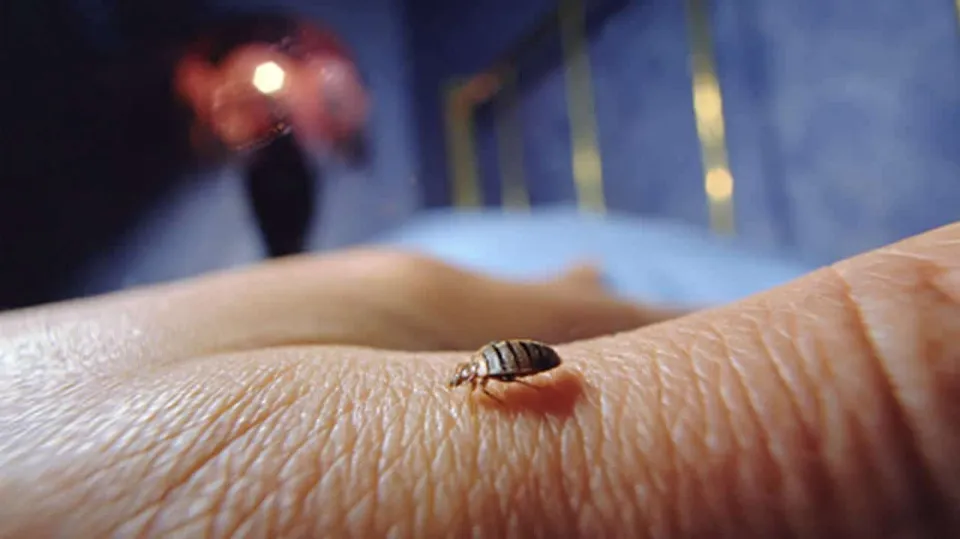
Where Bed Bugs Hide?
Adults, skin castings, feces, and eggs are being housed in the old box spring’s canvas strap. (Photo courtesy of Dr. Louis Sorkin)
Bed bugs can hide in many different places when they are not feeding. Around the bed, they can be found near the piping, seams and tags of the mattress and box spring, and in cracks on the bed frame and headboard.
If the room is heavily infested, you may find bed bugs:
- In curtain folds, between cushions, and in seams of couches and chairs.
- In drawer joints.
- appliances and electrical receptacles.
- Under loose wall paper and wall hangings.
- at the point where the ceiling and wall converge.
- Even in a screw’s head.
The width of a bed bug is roughly equal to that of a credit card, so they can fit in very small crevices. If a crack can accommodate a credit card, it might be hiding a bed bug.
Bed Bug Behavior and Habit
Knowing how bed bugs behave (in terms of what they eat, how they live, and how they reproduce) will enable you to detect an infestation before it takes hold and to keep an eye out for them after your home has been treated.
Feeding:
- Appear to prefer to feed on humans, but will feed on other mammals and birds as well.
- Will easily move 5–20 feet away from established hiding places (referred to as a harborage) to graze on a host.
- Even though they are primarily active at night, if hungry they will seek hosts in full daylight.
- Feeding may take 3 to 12 minutes.
- The rusty or tarry stains on bed sheets or in bug hiding places are caused by adults and large nymphs voiding leftovers from previous blood meals 20% of the time while still feeding.
Life Stages/mating:
- Before a bed bug can advance to one of its six life stages, it needs to have at least one blood meal.
- They are able to feed multiple times.
- The skin must molt during each stage as well.
- Males and females must eat at least once every 14 days for them to continue mating and laying eggs.
- Each female may lay between one and three eggs per day and 200 and 500 eggs over the course of her lifetime, which is typically between six and twelve months but may be longer.
- Under ideal circumstances, the egg-to-egg life cycle could take four to five weeks.
Living Conditions:
- The body temperature of bed bugs must be above 45°C (113°F) in order for them to survive and remain active. They can survive and be active as low as 7°C (46°F).
- The room must be even hotter to ensure that sustained heat reaches the bugs wherever they are hiding in order to effectively kill bed bugs with heat.
- Almost anywhere their host can live, common bed bugs can be found.
- Tropical bed bugs (Cimex hemipterus), which are present in tropical and subtropical regions, demand a higher average temperature than do common bed bugs.
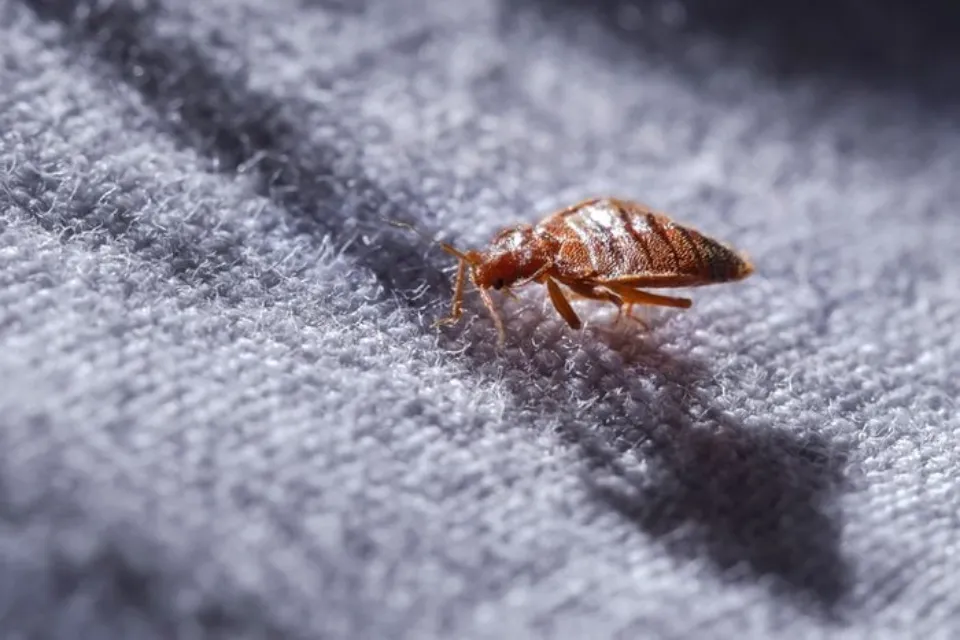
How to Prevent Bed Bugs?
Preventing bed bugs is much simpler than getting rid of them. Here are some suggestions for doing so from the Environmental Protection Agency (EPA):
- Get a high-quality mattress encasement and put the bedspring and mattress inside of it.
- Check second-hand furniture, clothes, and beds for bed bugs before taking them inside. To inspect every seam, crevice, and corner of the furniture, take it apart. While the piece is being disassembled, vacuum the entire thing.
- Vacuum frequently, and promptly throw the bag in the outside trash.
- At laundries, exercise caution. In order to kill any hitchhikers, make sure to dry your clothes for at least 30 minutes on hot.
- Inspect the luggage rack, bedding, mattresses, box springs, and furniture in a motel room for bed bugs. If there is a problem, put your luggage in the bathtub while you check in.
How to Get Rid of Bed Bugs Effectively?
Getting rid of bed bug infestations used to require potent pesticides that could only be used by a licensed pest control company.
Houses can now be treated by heating them to a temperature of 120–130°F for a number of hours, though the EPA and Extension still advise hiring a pest control company. Pest control companies have specialized heaters and hot air blowers to get the whole house hot at once.
For a successful bed bug extermination in your home, we advise hiring a reputable pest control service. Read on to learn the steps that will be involved in the process:
Preparing for Treatment
You’ll be given a list of preparations to make before the pest control company arrives. You must adhere to these instructions to the letter or you will waste your money. Before you treat your home, the same things need to be done.
If any bed bugs survive the treatment, they will reproduce, starting a new bed bug infestation.
These steps will assist you in getting rid of bed bugs on your own if you decide against hiring a pest control company.
Remove Clutter
While clutter makes your home a haven for pests of all kinds, it is especially detrimental if you have bed bugs.
- Remove all contaminated books, magazines, newspapers, and cardboard boxes.
- Use plastic bins to store things instead of cardboard, which allows bed bugs to hide inside the voids.
- Maintain the clothing off the ground.
- Be careful to ensure that nothing you dispose of introduces bed bugs to another household.
What is a platform bed? Below will give you the pros and cons and types of platform beds. Helping you to decide which one is better for you when talking to platform beds vs. box springs.
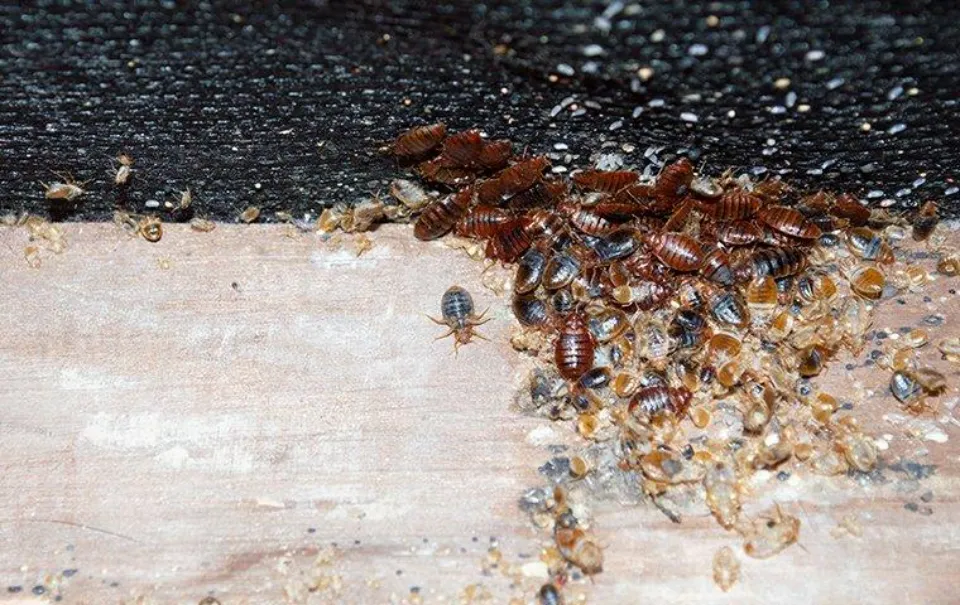
Isolate the Bed
By isolating the bed, you can keep bed bugs off it.
- A wall or other piece of furniture must be at least six inches away from the bed.
- Put bed bug traps under the bed’s four legs. As soon as the situation is under control, check these interceptors every day for at least a year.
- Ensure that headboards, footboards, and bed frames are free of bed bugs and their eggs.
- Put the mattress and box springs inside of an enclosure.
- Tuck the bed linens into the mattress, so they do not reach the floor.
- Do not keep anything under the bed.
Clean Everything
Cleaning will be necessary throughout the entire home.
- Every item in the room should be pushed up against one wall.
- Wash everything that can be washed in hot water and dry on high heat in the dryer for at least 30 minutes.
- Put the cleaned items in a plastic bag with a tight seal to prevent reinfestation.
- Wall hangings and drapes should be taken down and treated.
- Vacuum, sweep, mop, or polish the unfinished side of the room as appropriate for the surface.
- Take all electronics and other things that cannot be dried in the dryer and place them in sealed plastic bags. They can be exposed to the sun for eight hours or frozen for four days at 0 degrees F. Make sure they won’t melt or get damaged from freezing by doing a preliminary check.
- All furniture should be disassembled and thoroughly cleaned.
- Place an item on the clean side of the room once it has been meticulously cleaned.
- Repeat until everything is on the clean side of the room.
- Clean the portion of the room that is now empty as described above.
- Work through every room in the house like this.
Reduce Bed Bug Living Areas
Bed bugs must not have any hiding places, which is crucial.
- Any cracks and crevices should be filled and baseboards should be caulked.
- Remove plug covers and switch covers and clean up any bed bugs there.
- To prevent bed bugs from crawling behind plug covers and switch covers, tape or caulk the edges of the covers.
- Fix any drywall that is loosened or has holes in it.
- Remove or glue down loose wallpaper.
Use Pesticides
Bed bug-killing organic pesticides don’t exist. There aren’t many helpful inorganic pesticide options available to homeowners. Hire a pest control company if you must use pesticides.
If you’ve hired one, this is the stage where they’ll use licensed, reliable pesticides to eradicate bed bugs from your house. To ensure you get the best results for this round of pest control, make sure you take all the steps they outline in addition to those we’ve already mentioned.
Whether you’re looking to buy a new bed for yourself, a loved one, or just curious about the size of the bed, it can be a little confusing when you come across names and terms you’ve never heard before during your search. So, what is a double bed?
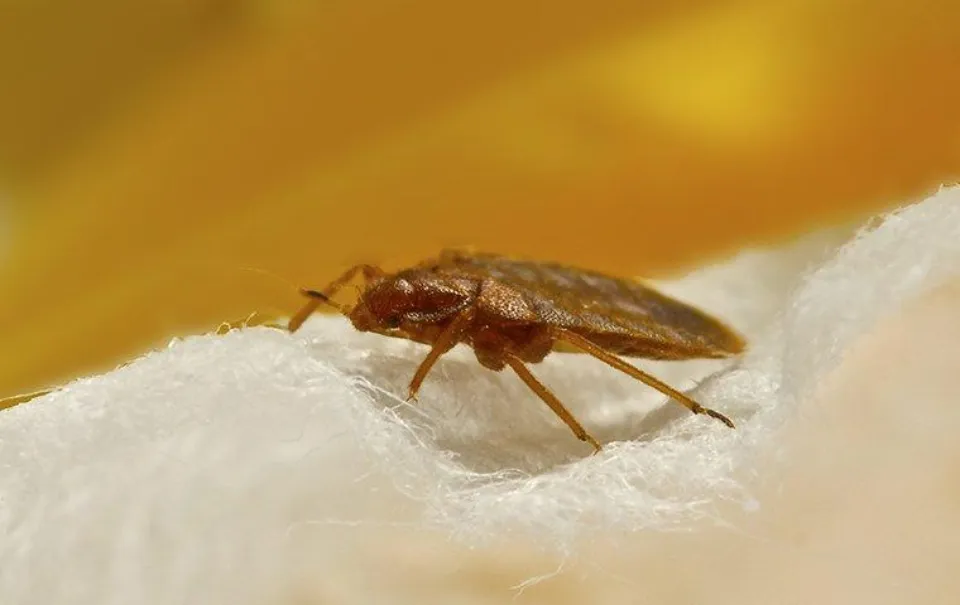
FAQs
Can You See Bed Bugs on Your Mattress?
Adult bedbugs are indeed visible to the human eye — although some of us may need to put on our prescription glasses. According to the Environmental Protection Agency, bedbugs are typically 5 to 7 millimeters long, the size of an apple seed.
Can You Have Bed Bugs and Not See Them?
“For some people, it can take up to two weeks for them to react,” The bites themselves don’t have a distinctive appearance, according to White, but they do have a tendency to appear on the arms, shoulders, neck, and face—all of which are exposed while you’re sleeping and therefore simpler to get to.
Do Bed Bugs Live in Pillows?
Mattresses and pillows make potential habitats for bed bugs. Pillows could be a source of bed bug infestations because they may also serve as hosts for bed bug eggs. The presence of bites could be a clue that bed bugs have infested pillows.
Summary: How to Know If You Have Bed Bugs?
Most people become aware of itchy bites in the early morning hours.
The bites are concentrated in a single small cluster on your body, making them easy to identify.
Bed bugs leave marks, stains, and odor on furniture, so if you don’t see the bug itself look for these signs.
If you have any questions, please leave a comment. My Prime Home tries to give you the best home improvement information. Don’t forget to share the post. Thank you for reading.
You may want to know:
